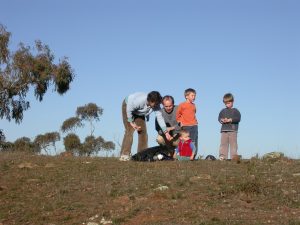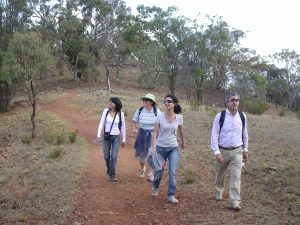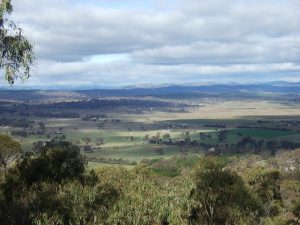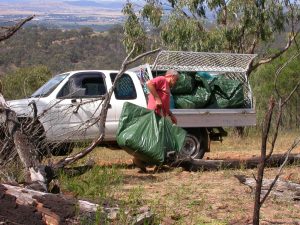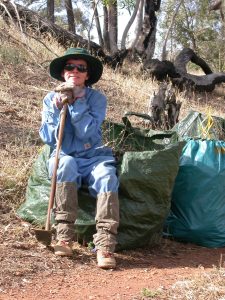Many people enjoy walking or running up the Casuarina Track and the views from the ridge where Casuarina Track joins the summit track.
Wooden benches and fallen logs invite rests and picnics are popular with families.
Twenty years ago the saddle was a treeless expanse covered with horehounds, thistles and other weeds. The weeds are a legacy of the time when the mountain was grazed by sheep.
One of FoMM’s early projects was to remove the weeds and plant a variety of local native plants which are now thriving. Come and help remove weeds which are creeping back.
When: Sunday 21st May, 1pm – 4pm; give as much time as you want.
Where: The old sheep camp at the junction of Casuarina Trail with the summit trail, click on this map to see the meeting point marked with the red balloon number 6, access points to Casuarina Track and the location of the sheep camp. If you are unfamiliar with the area, be aware that it will take you 30 or 35 minutes to walk there from the bottom.
What: Hand weeding Fleabane and horehound.
Bring Sun protection, drinking water, garden gloves and secateurs if you have them; wear sturdy shoes and clothes which cover your limbs. We provide sanitiser, some tools, gloves, and a delicious cake for afternoon tea.
Enquiries: secretary@majura.org
For further information on the sheep camp project, visit this link
Why are so many weeds growing on the ridge? We do not know for sure, however, one idea is that when Mt Majura and neighbouring Mt Ainslie were grazed, sheep preferred the ridges because of a summer breeze and warmer temperatures in winter (temperature inversion in autumn and winter). Sheep carried the nutrients from grazing the mountains to their preferred resting sites and left them there with their droppings. Over time, nitrogen and phosphorous accumulated in the soil and the enriched soil provided the perfect growth environment for nutrient lovers such as horehounds and thistles.
Notes from the sheep camp project: What happened to the horehound that had been pulled out?
FoMM began work at the old sheep camp in October 2004. Most of the ridge was covered with introduced herbaceous plants, mainly with horehound. Horehound is a perennial plant. perennial plants live longer than 2 years, sometimes significantly longer…
Volunteers pulled out the horehound and placed them in bags …
… then carried the bags …
… and stored the bags where Casuarina Track joins the summit track, …
… uploaded them on a truck – over 40 truckloads of bagged horehound were removed in the first four years of the project, …
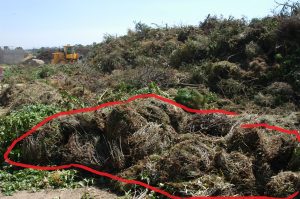
A truckload of horehound at Sand and Gravel encircled with red; note the horehound kept in shape after being shaken out of bags (D. Graetz).
… and transported them to Sand and Gravel‘s green recycle yard to be turned into fine compost.
Photos, unless otherwise indicated, by me


